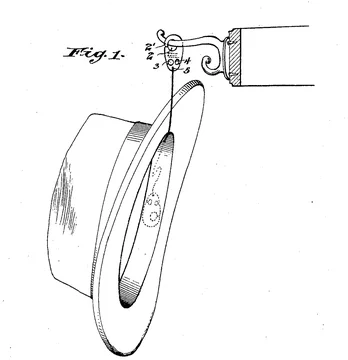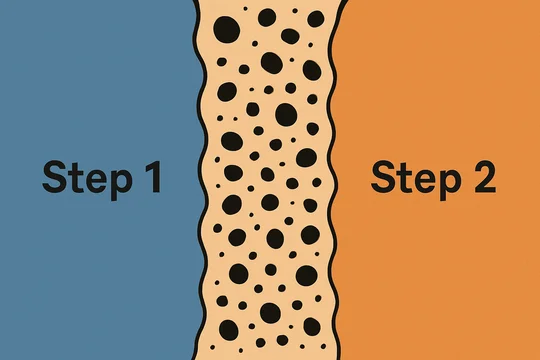
Judge Andrews resolved what seems like a tough § 101 motion today, and I thought the claims of the patent (and the outcome) were interesting.
The patent involves a system for mixing gasoline and butane. The patent specification said that these fuels were previously mixed in multiple ways, including in a laborious process involving manually adding butane to a tank of gasoline and then stirring the two together.
There were a number of claims at issue, but the one that stands out most to me simply claims the whole system and what it does, without claiming how the components work:
A system for blending gasoline and butane at a tank farm comprising:
a) a tank of gasoline;
b) a tank of butane;
c) a blending unit, at the tank farm, downstream of and in fluid connection with the tank of gasoline and the tank of butane;
d) a dispensing unit downstream of and in fluid connection with the blending unit; and
e) a rack, wherein the dispensing unit is located at the rack and is adapted to dispense gasoline to gasoline transport vehicles.
That's it. Little of the claim describes how the system works beyond the fact that it involves a blending unit, a dispensing until, and a rack that holds the dispensing unit, and the fact that the blending unit is "downstream" from the tanks.
It's not hard to imagine why a defendant might bring a § 101 motion here, even though on the surface the claim involves very concrete and physical subject matter. The claim doesn't seem to do much to limit itself to a single way of accomplishing the task; at some level, it might as well claim "automatically mixing gasoline and butane downstream of the tanks."
The patentee here, however, won the § 101 analysis at Alice Step 1. Defendants argued that the claim focused on "using a computer to automate aspects of butane blending that have long been done manually." After trial, the Court found otherwise:
The specification and trial testimony make clear that manual blending was performed prior to this invention. Defendants, however, have failed to show that the claimed invention simply automates this prior manual blending. Defendants have not met their burden to show that the claimed blending steps " have long been done manually." . . . Instead, I find that [the] claims . . . are directed to improved systems and methods for blending butane.
The fact that the claimed blending occurs downstream helped:
Unlike the prior manual blending method, where butane was added directly to the gasoline tank, "The blending occurs downstream of the gasoline and butane storage tanks on the tank farm, after the gasoline and butane are drawn from their storage tanks for dispensing into a tanker truck, but before the gasoline is actually dispensed to the tanker truck at the rack."
The Court looked to the specification for more detail on the blending portion:
Further, the invention uses "a blending apparatus" for blending the butane and gasoline streams at varying blend ratios to achieve a desired vapor pressure, and the apparatus is "under the continuous control of a process control unit, which can vary the ratio at which gasoline and butane are blended to attain a desired vapor pressure." (Id. at 3:21-31).
The Court also relied on the specification's description of the benefits of the invention, in addition to the language of the claims:
The claimed invention allows for blending the butane and gasoline streams to form a blend such that the maximum allowable vapor pressure is not exceeded and then dispensing the blend at the rack, without having to stir the tank and certify the vapor pressure of the tank before releasing it to the rack. . . .
The specification explains that these features are part of the claimed invention's improvement over conventional methods. Specifically, "By blending gasoline and butane immediately before the gasoline is dispensed to a tanker truck, and by continuously controlling the ratio of gasoline and butane blended by the blending apparatus, a number of significant advantages are attained, including," among other things, that "[t]he ratio of butane and[] gasoline blended can be easily varied and controlled" and "operators are able to maximize the amounts of butane that they blend."
The Court ultimately held that the claims are not just "do it on a computer" claims:
The . . . patents do not simply propose taking the previous manual blending systems and replacing the human operator with a computer. The patents claim a specific improvement to the physical blending. . . .
[H]ere, the claims are not simply directed to the automation of the prior manual blending methods in which an operator would measure the [vapor pressure] of samples from a gasoline tank, add the appropriate amount of butane into the tank, stir the tank, and then measure the [vapor pressure] of the blend. As shown above, the claims are directed to specific technical systems and methods that "allow[] a distributor to blend more gasoline than would be possible with the prior art."
Reading the opinion, I get the sense that the various benefits listed in the patent were fairly impactful in helpful to save the claim. But there were other factors as well.
Late-Evidence Chickens Come Home to Roost
This is the same Sunoco case that we talked about a couple of week ago, where the Court struck seven prior art references that the defendants offered for the first time after post-trial briefing.
In a paragraph and footnote, the Court here explained what the defendant was trying to accomplish with those references—and how it failed:
The specification and trial testimony make clear that manual blending was performed prior to this invention. Defendants, however, have failed to show that the claimed invention simply automates this prior manual blending. Defendants have not met their burden to show that the claimed blending steps "have long been done manually." [3]
[3] I granted Sunoco's Motion to Strike the exhibits attached to Defendants' Proposed Findings of Fact. . . . These exhibits related to the prior art Kerr-McGee system, which was an invalidating reference in [another Sunoco case in a different district]. Defendants argue that this Court can still find that the claimed blending steps were conventional activities based on the remaining findings of fact that rely on excerpts of the Kerr-McGee documents from the prosecution history of the '948 patent (which is a continuation of the '686 patent). . . . These documents, however, do not show that the claimed blending steps were conventional activities. Instead, I find that the record evidence shows that the prior manual blending was performed according to the steps detailed supra.
Ouch.
If you enjoyed this post, consider subscribing to receive free e-mail updates about new posts.




